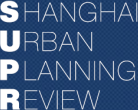面向存量发展时代的上海强度分区规划技术方法 优化研究——基于多要素互动反馈的探讨
Research on the Technical Method of Shanghai Density Zoning Planning for the Era of Stock Development: Exploration Based on Multi-factor Interaction
邹 玉
上海市城市规划设计研究院 总规分院副院长,高级工程师,硕士
骆 悰(通信作者)
上海市规划和自然资源局 城市更新处处长,正高级工程师 957260623@qq.com
朱春节
上海市城市规划设计研究院 高级工程师,硕士
摘要: 上海较早开展强度分区规划的技术方法研究。现行的开发强度管控制度已执行了10余年,在上海的规划管理中发挥了重要作用。《上海市城市总体规划(2017—2035年)》明确了规划建设用地负增长的要求。上海已经转入了注重存量发展的新时代;强度分区主要解决的问题,已经从为增量空间开发制定统一规则,转向提升城市空间品质和促进城市高质量发展。依据强度分区的基本特点,从问题导向和趋势导向出发,研究上海强度分区规划技术方法的优化路径;提出以现状与规划数据库分析为基础,依托综合交通模型,构建总规分解和主导因素相结合的规划分区制定技术框架,以实现强度和高度的协同统一、“人口—用地—交通—形态”的互动反馈。最后,延伸探讨精细化管控的若干规则。
Abstract: Shanghai has researched the technical methods of density zoning planning earlier. The development density zoning control rules have been implemented for more than ten years and have played an important role in the planning and management of Shanghai. The Shanghai Master Plan (2017-2035) specifies the requirement of a decrease in planned construction land. While Shanghai has entered a new era that emphasizes the development of existing land uses, the main problem to be solved by density zoning has gradually shifted from formulating unified rules for incremental space development to improving the quality of urban space and promoting high-quality urban development. This article studies the optimization path of density zoning planning technical method in Shanghai. It proposes a framework based on the current situation and planning database, relying on a comprehensive transportation model, to combine the decomposition of the overall plan with dominant factors, in order to achieve the coordinated unity of intensity and height and the interactive feedback of "population - land – transportation - form". In addition, several rules for refined control will be further explored.
关键词:强度分区规划;技术方法;多要素互动反馈;上海
Keyword: density zoning planning; technical method; multi-factor interaction; Shanghai
中图分类号:TU984
文献标识码: A
金探花,杨俊宴,王德. 从城市密度分区到空间
形态分区:演进与实证[J]. 城市规划学刊,2018
(4):34-40.
JIN Tanhua, YANG Junyan, WANG De. From
urban density zoning to form-based zoning:
evolution and demonstration[J]. Urban Planning
Forum, 2018(4): 34-40.
A. B. 布宁,Т. Ф. 萨瓦连斯卡娅. 城市建设艺术
史——20世纪资本主义国家的城市建设[M]. 北
京:中国建筑工业出版社,1992.
БУНИН A B, САВАРЕНСКАЯ Т Ф. History of
the art of urban construction—urban construction
in capitalist countries in the 20th Century[M].
Beijing: China Architecture and Building Press,
1992.
薄力之. 城市建设强度分区管控的国际经验及
启示[J]. 国际城市规划,2019,34(1):89-98.
BO Lizhi. On the urban development density
zoning: international experience and inspiration[J].
Urban Planning International, 2019, 34(1): 89-98.
邹兵. 深圳密度分区制度的演进历程解析和启
示[J]. 国际城市规划,2023,38(2):15-23.
ZOU Bing. Analysis and enlightenment of the
evolution of Shenzhen density zoning system[J].
Urban Planning International, 2023, 38(2): 15-23.
李亚洲. 精细化、指引化、体系化:国内开发强度
分区管控趋势研究[C]//活力城乡 美好人居——
2019中国城市规划年会论文集. 北京:中国建筑
工业出版社,2019:9.
LI Yazhou. Refinement, guidance, and system�atization: research on the trend of zoning and
control of domestic development density[C]//
Vitality and beautiful living in urban and rural
areas - proceedings of 2019 China Annual National
Planning Conference. Beijing: China Architecture
& Building Press, 2019: 9
梁鹤年. 合理确定容积率的依据[J]. 城市规划,
1992(2):58-60.
LEUNG Hok-lin. Reasonable basis for determining
the floor area ratio[J]. City Planning Review,
1992(2): 58-60.
薄力之,宋小冬. 建设强度分区决策支持研
究——以杭州市为例[J]. 城市规划学刊,2016
(5):19-27.
BO Lizhi, SONG Xiaodong. A research on decision
support for density zoning: Hangzhou as an
example[J]. Urban Planning Forum, 2016(5): 19-27.
唐子来,付磊. 城市密度分区研究——以深圳经
济特区为例[J]. 城市规划汇刊,2003(4):1-9.
TANG Zilai, FU Lei. A rational approach to urban
density zoning: the case of Shenzhen special
economic zone[J]. Urban Planning Forum, 2003(4):
1-9.
周军,谭泽芳. 交通承载力评估在密度分区及容
积率测算中的方法研究及应用实践——以深圳
为例[J]. 城市规划学刊,2020(1):85-92.
ZHOU Jun, TAN Zefang. A research on method and
application of traffic carrying capacity evaluation
in density zoning and FAR measurement: taking
Shenzhen as an example[J]. Urban Planning Forum,
2020(1): 85-92.
杨俊宴,史宜. 城市规划语境下密度研究的源流
演化与展望[J]. 国际城市规划,2023,38(2):1-7.
YANG Junyan, SHI Yi. The evolution and pro�spect of density research in the context of urban
planning[J]. Urban Planning International, 2023,
38(2): 1-7.
唐子来,付磊. 发达国家和地区的城市设计控制
[J]. 城市规划汇刊,2002(6):1-8.
TANG Zilai, FU Lei. Urban design control in
developed countries and regions[J]. Urban Planning
Forum, 2002(6): 1-8.
唐子来,田宝江,张月. 城市规划中密度分区管
控的基本特征和实践案例[J]. 国际城市规划,
2023,38(2):8-14.
TANG Zilai, TIAN Baojiang, ZHANG Yue.
Essential features and practical examples of
density zoning control in urban planning[J]. Urban
Planning International, 2023, 38(2): 8-14.
薄力之,宋小冬. 建设强度的精细化管控——
“整体分区”与“地块赋值”方法的融合[J]. 城
市发展研究,2018,25(9):82-90.
BO Lizhi, SONG Xiaodong. Fine control of
construction intensity: integration of "overall
zoning" and "parcel assignment" methods[J].
Urban Development Studies, 2018, 25(9): 82-90.
张晓东,郑猛,张宇,等. 交通承载力分析方法及
在详细规划中的应用[C]//2012中国城市规划年
会论文集. 昆明:云南出版集团公司,云南科技
出版社,2012.
ZHANG Xiaodong, ZHENG Meng, ZHANG Yu,
et al. Traffic carrying capacity analysis method
and its application in detailed planning[C]//
Proceedings of the 2012 Annual National Planning
Conference. Kunming: Yunnan Publishing Group
Co., Ltd., Yunnan Science and Technology Press
Co., Ltd., 2012.
张泽,付磊,姜秋全,等. 总体城市设计中高度和
强度控制的双基准模型[J]. 同济大学学报(自
然科学版),2019,47(8):1083-1089.
ZHANG Ze, FU Lei, JIANG Qiuquan, et al. Dual�model of intensity and vertical control in overall
urban design[J]. Journal of Tongji University
(Natural Science), 2019, 47(8): 1083-1089.
郑猛,张晓东. 依据交通承载力确定土地适宜开
发强度——以北京中心城控制性详细规划为例
[J]. 城市交通,2008(5):15-18.
ZHENG Meng, ZHANG Xiaodong. Determine
appropriate land-use intensity according to road
capacity: a case study of detailed control planning
for central district in Beijing[J]. Urban Transport
of China, 2008(5):15-18.
齐酷,张贵祥. 北京市交通综合承载力评价与提
升策略[J]. 生态经济,2016(1):82-85.
QI Ku, ZHANG Guixiang. Research on evaluation
and development strategy of comprehensive
traffic carrying capacity in Beijing[J]. Ecological
Economy, 2016(1): 82-85.
周丽亚,邹兵. 探讨多层次控制城市密度的技术
方法——《深圳市经济特区密度分区研究》的
主要思路[J]. 规划研究,2004(12):28-30.
ZHOU Liya, ZOU Bing. Research of methodology
on control of city density[J]. Journal of Planning
Literature, 2004(12): 28-30.
钟远岳,钟广鹏. 地块交通影响下的交通需求预
测模型及应用[J]. 交通运输工程与信息学报,
2019(2):73-80.
ZHONG Yuanyue, ZHONG Guangpeng. Traffic
demand forecasting model and its application
based on the land influences[J]. Journal of
Transportation Engineering and Information,
2019(2): 73-80.
张子培,李海军,冯明翔,等. 面向国土空间规划
领域的“交通—空间”互动耦合研究——以武
汉为例[C]//韧性交通:品质与服务——2023年
中国城市交通规划年会论文集. 北京:中国建筑
工业出版社,2023:12.
ZHANG Zipei, LI Haijun, FENG Mingxiang, et
al. Research on the interactive coupling of "traffic�space" in the field of territorial spatial planning—
taking Wuhan as an example[C]//Resilient trans�port: quality and service - proceedings of the 2023
Annual Conference of China Urban Transportation
Planning. Beijing: China Architecture & Building
Press, 2023: 12.
黄宁,徐志红,徐莎莎. 武汉市城市建设用地强
度管控实证研究与动态优化[J]. 城市规划学刊,
2012(3):96-101.
HUANG Ning, XU Zhihong, XU Shasha. An
empirical study on development intensity control
in the city of Wuhan[J]. Urban Planning Forum,
2012(3): 96-101.
苏红娟,朱春节,任千里. 建筑开发容量与交通
承载力的协同优化研究——以上海市中心城为
例[J]. 上海城市规划,2015(2):88-95.
SU Hongjuan, ZHU Chunjie, REN Qianli.
Research on collaborative optimization between
construction scale and traffic carrying capacity: a
case study of Shanghai central city[J]. Shanghai
Urban Planning Review, 2015(2): 88-95.
李小静,王花兰,范媛媛,等. 城市道路交通承
载力研究综述[J]. 交通运输系统工程与信息,
2022,22(6):15-25.
LI Xiaojing, WANG Hualan, FAN Yuanyuan, et
al. Literature review on urban road traffic carrying
capacity[J]. Journal of Transportation Engineering
and Information, 2022, 22(6): 15-25.
广州市交通规划研究院. 大数据视野下面向国
土空间规划的交通承载力关键技术及应用[R].
2020.
Guangzhou Transport Planning Research Institute.
Key technology and application of traffic carrying
capacity for territorial spatial planning in big data
vision[R]. 2020.


